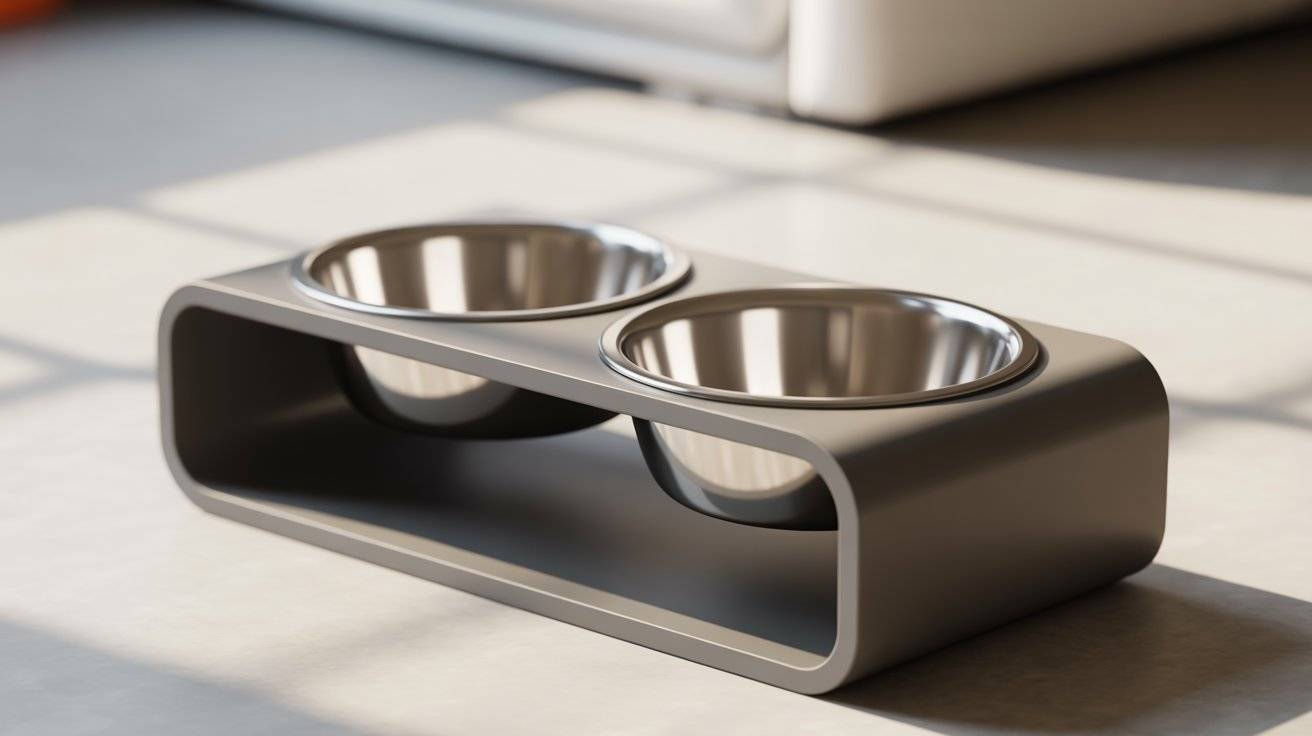Daily feeding should be calm and comfy, not a chore. The right setup lowers stress, supports better posture, keeps bowls cleaner, and helps with weight control. Cats avoid whisker stress with the right rim, dogs stop gulping, and busy schedules get easier with timed meals.
This guide breaks down what to know before you buy a modern pet feeder. We’ll cover ergonomics, safe materials like stainless steel and BPA-free plastics, and easy care that’s dishwasher safe.
You’ll see the pros and cons of an elevated dog bowl, a whisker friendly cat bowl, a slow feeder, and an automatic pet feeder. We’ll also show you how to choose the right size, set it up for your space, and care for it so it lasts.
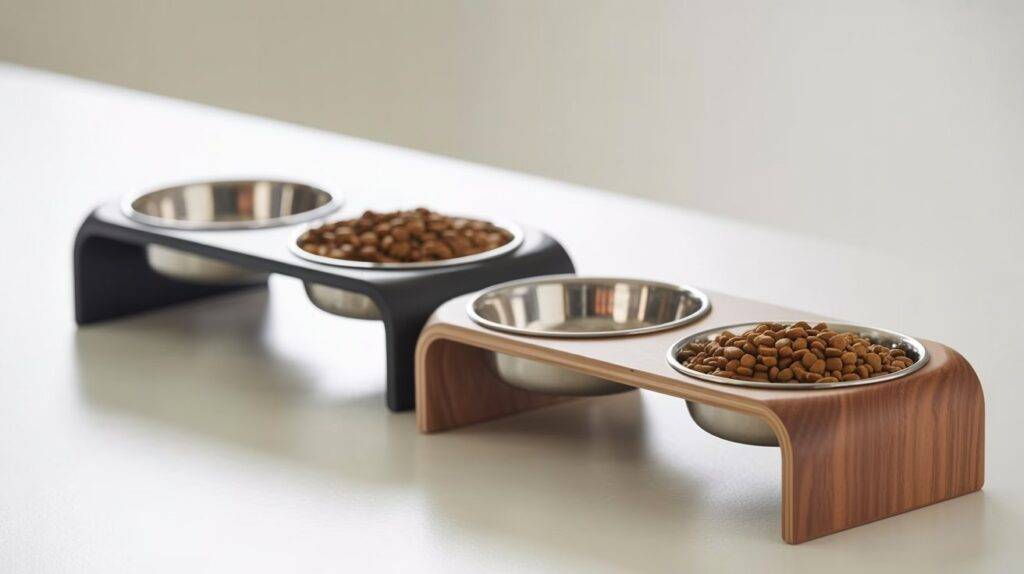
Comfort First: What Makes a Pet Feeder Truly Comfortable and Modern
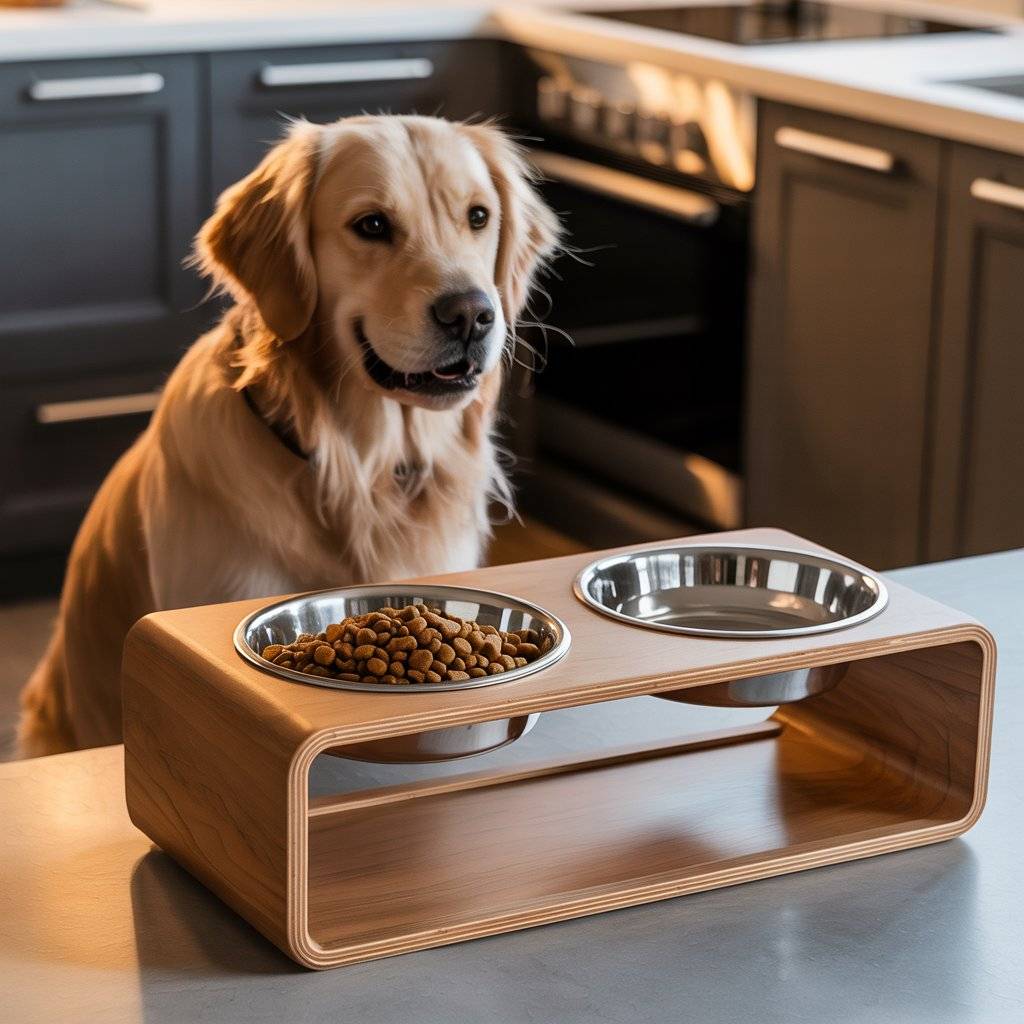
Comfort starts with how your pet stands, how the bowl feels, and how fast they eat. A good feeder supports joints, reduces stress at the bowl, and keeps digestion steady. Think posture, height, bowl shape, and meal pace working together.
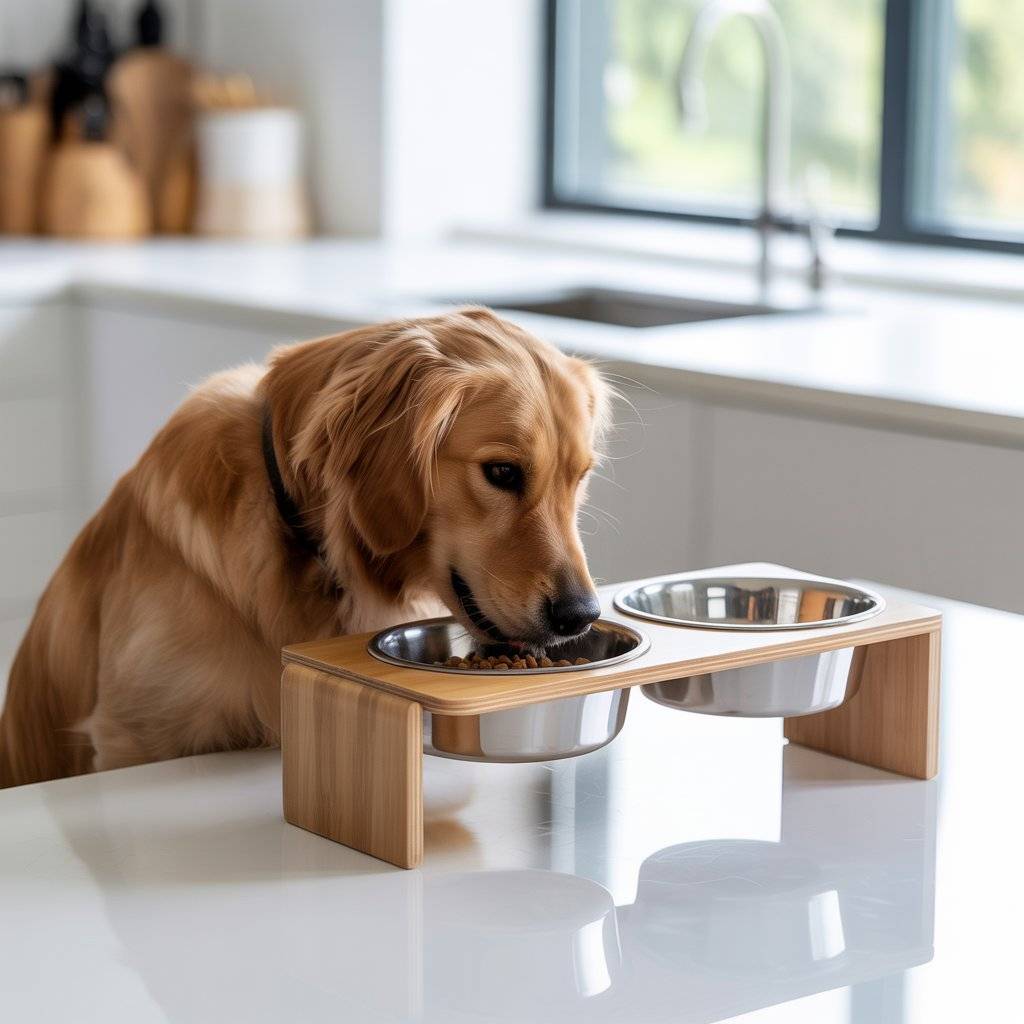
Ergonomics and height: safer posture for joints and digestion
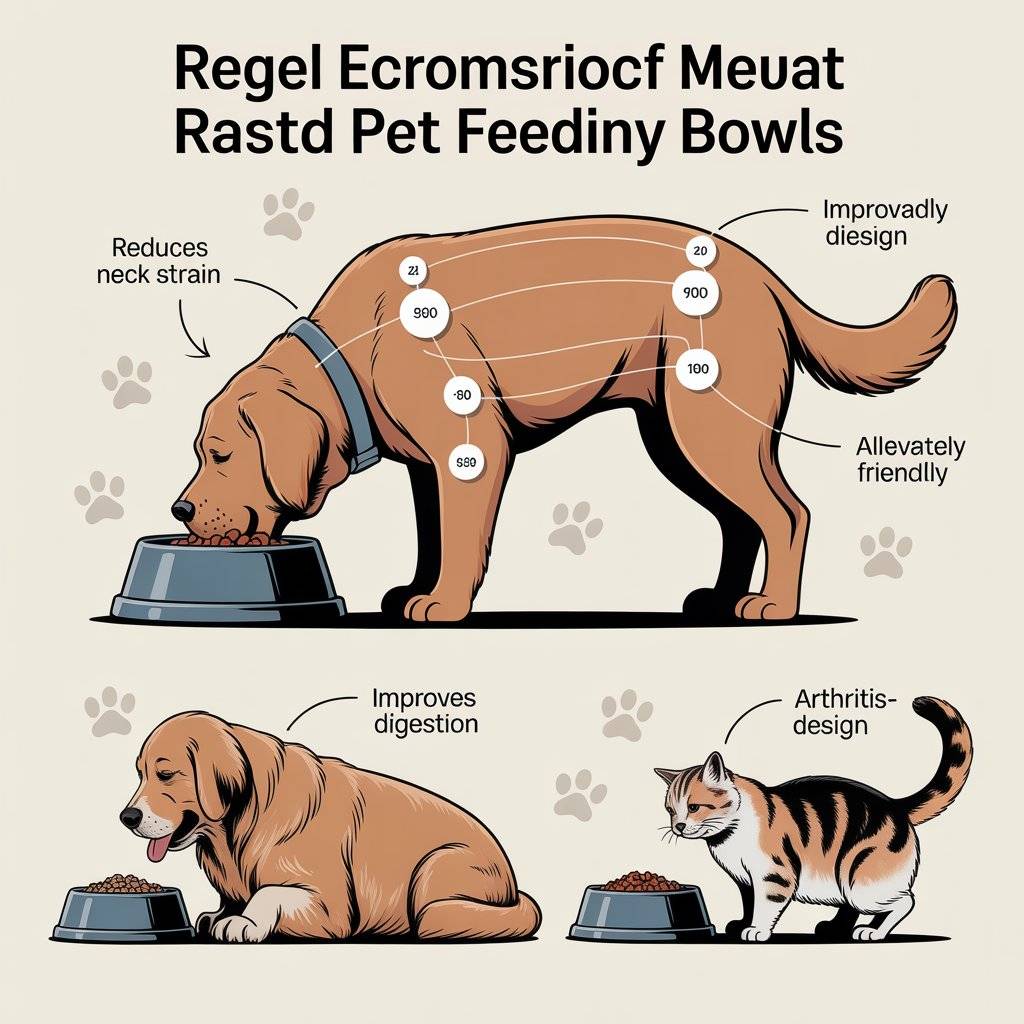
Raised bowls can reduce neck strain, shoulder load, and pressure on arthritic joints. Seniors, large dogs, and stiff pets often eat more calmly with a slight lift. Some cats also relax with gentle elevation, which can help reduce reflux.
Use this simple guide:
- Dogs: set the bowl rim near the lower chest, not at head height.
- Most cats: a small lift, about 1 to 2 inches, is enough.
Watch fast eaters. Very tall stands can make gulping worse if the height encourages a head-down, vacuum-style posture. For speed eaters, pair a modest lift with a slow feeder insert.
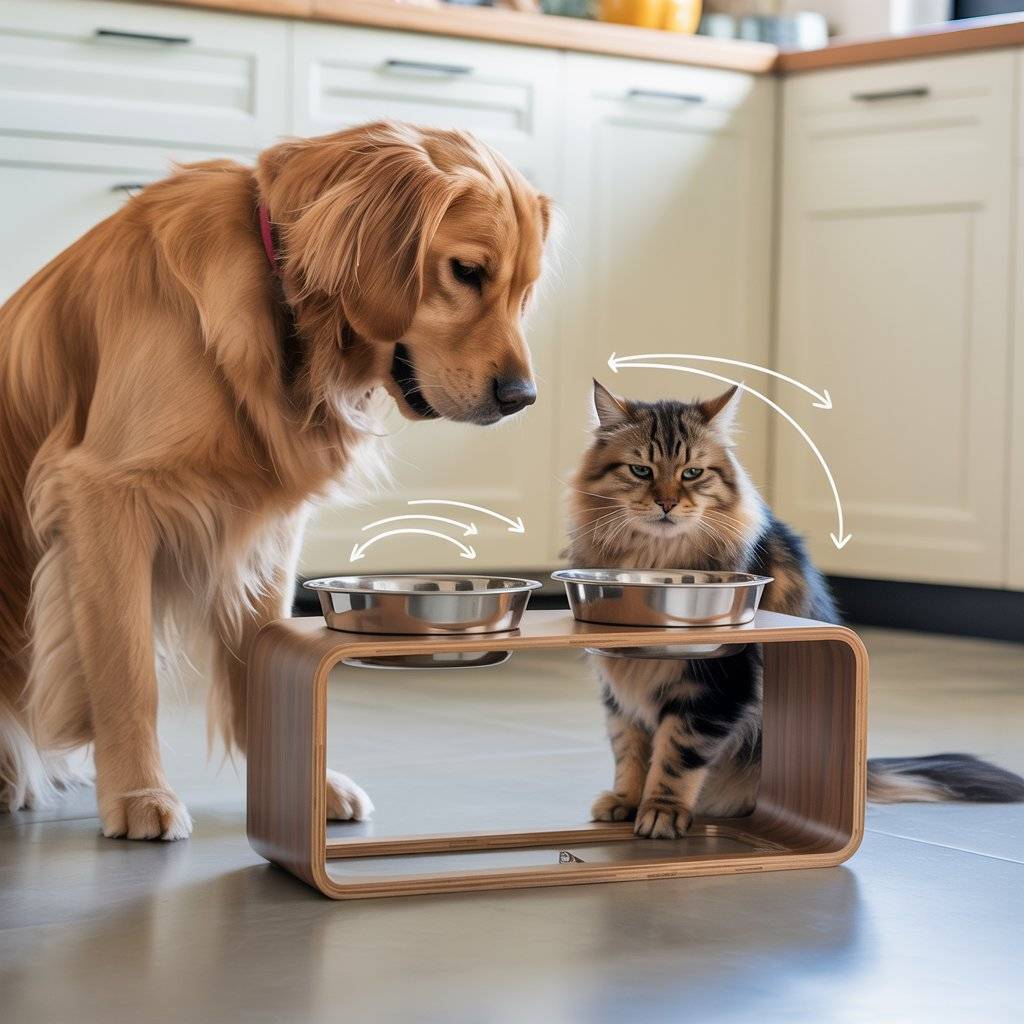
Materials and bowl shapes that feel good for pets
Pick materials that are safe, smooth, and easy to clean.
- 304/18-8 stainless steel: strong, rust resistant, and long lasting. It does not hold odors.
- Lead-free glazed ceramic: heavier, quiet on the floor, and comfy for picky pets. Check for chips.
- BPA-free plastic: light and cheap, but replace at the first sign of scratches. Soft or worn plastic can trap bacteria.
Shape matters:
- Cats do best with wide, shallow bowls that keep whiskers clear. This reduces whisker stress and fussy eating.
- Flat-faced breeds, like pugs or Persians, benefit from shallow or slightly tilted bowls so they can reach food without face pressure.
Noise, traction, and spill control for calmer meals
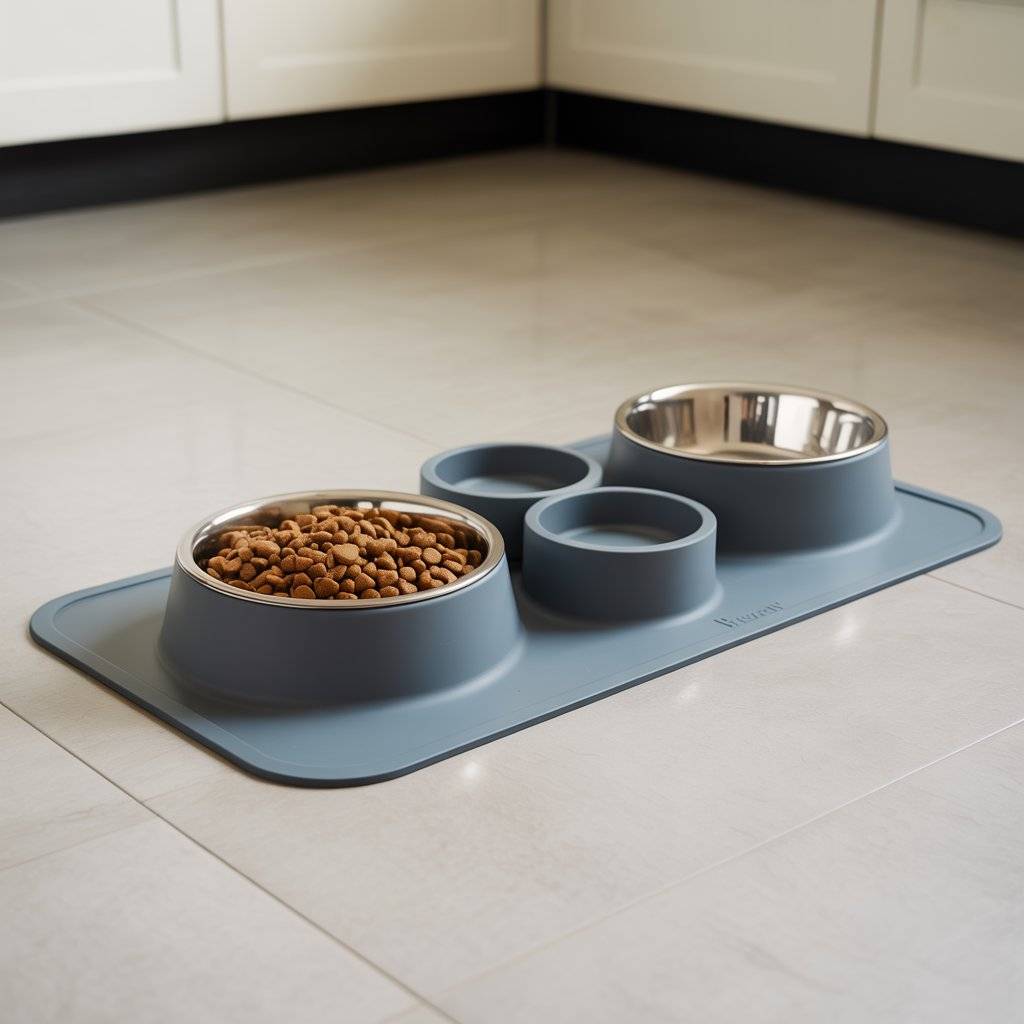
Meals feel calmer when the setup stays put and stays quiet. Look for non-slip bases, weighted stands, and silicone mats to stop sliding. Bowl inserts and snug wells also cut rattling.
Spill-proof edges and food-grade silicone placemats keep gravy and kibble off the floor. Smart feeders should use quiet motors so anxious pets keep eating. Stable gear matters most for excited eaters and big dogs with strong pushes.
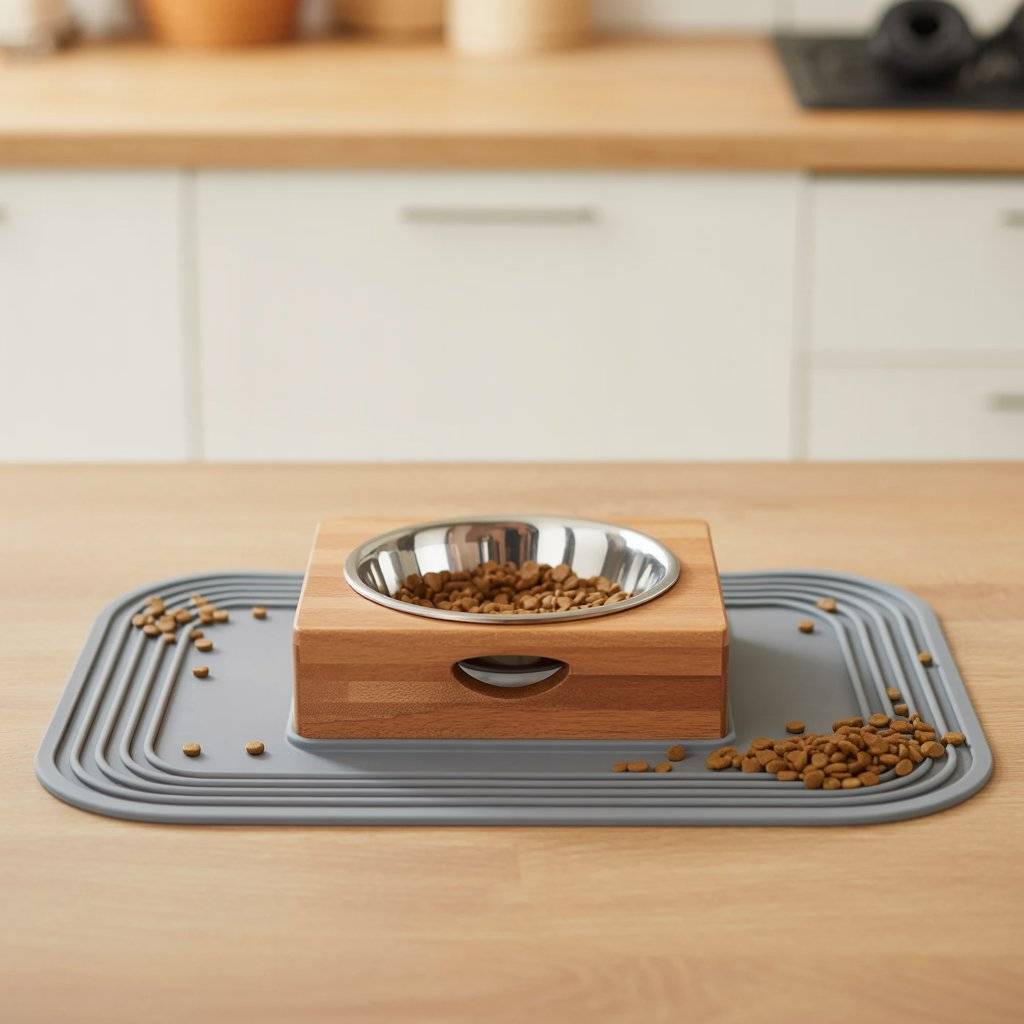
Easy cleaning and hygiene to protect health
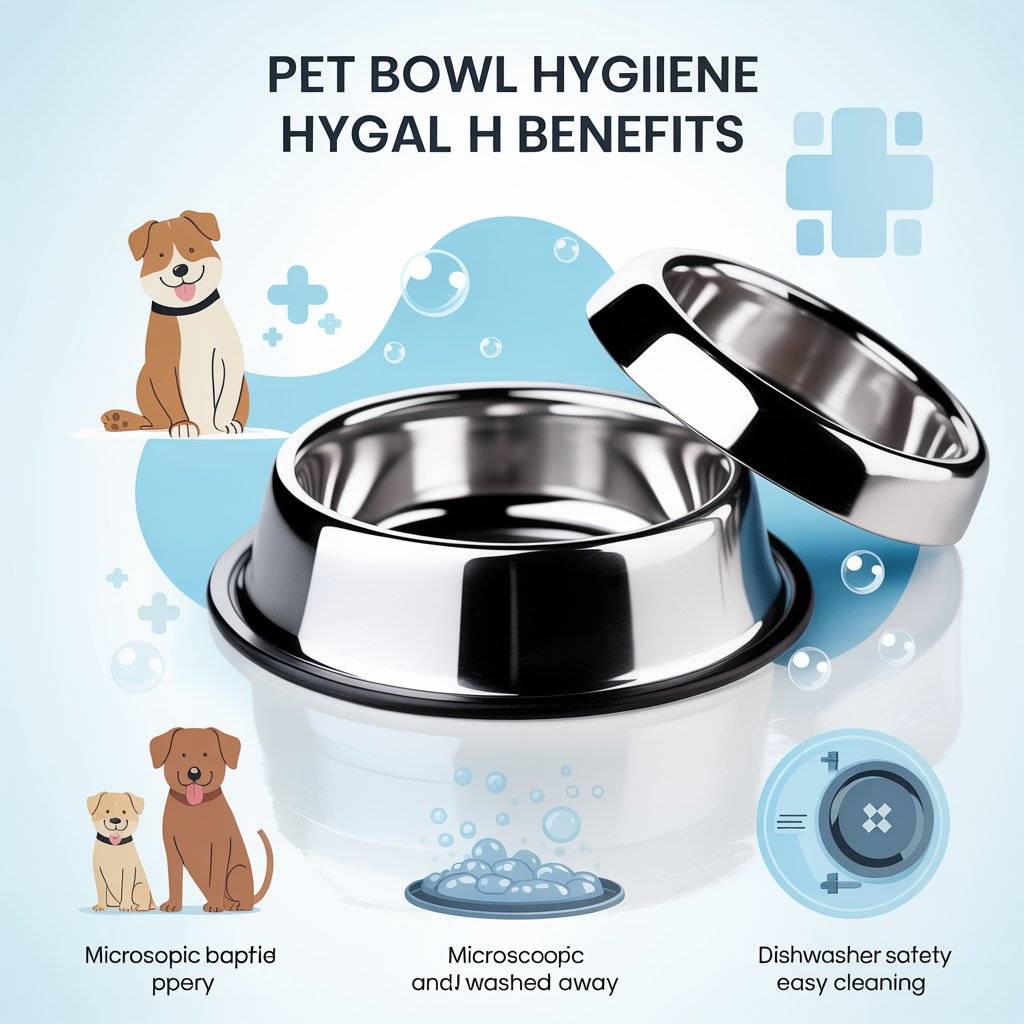
Clean bowls protect your pet’s mouth and gut. Smooth, dishwasher-safe parts that come apart make daily care simple. Biofilm, a slimy layer of bacteria, builds fast, especially with wet food.
Care routine:
- Rinse daily, deep clean weekly.
- Keep two sets of bowls for easy rotation.
- Use hot water and a bottle brush for seams and rims.
- Replace scratched plastic, since grooves hold grime.
- Prefer items with PFAS-free and BPA-free claims when listed.
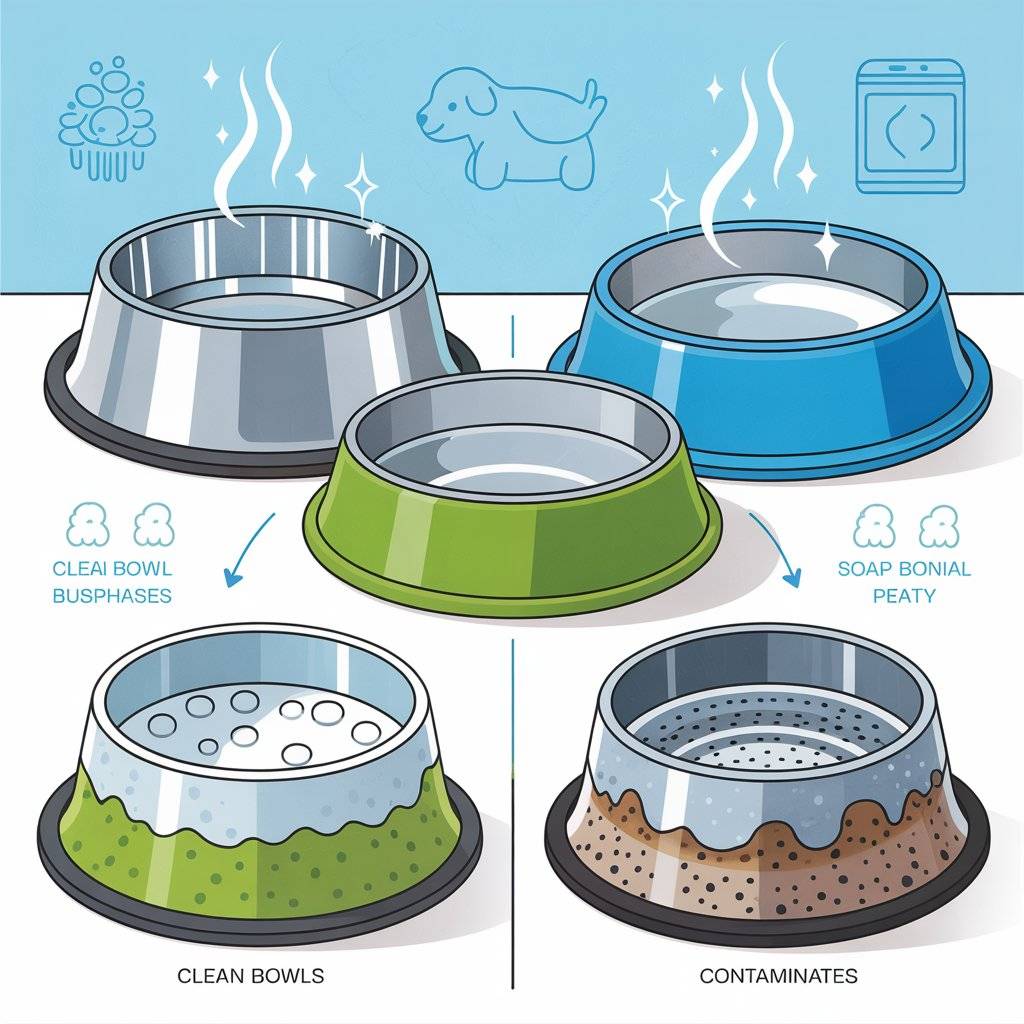
Types of Modern Pet Feeders, With Pros and Cons
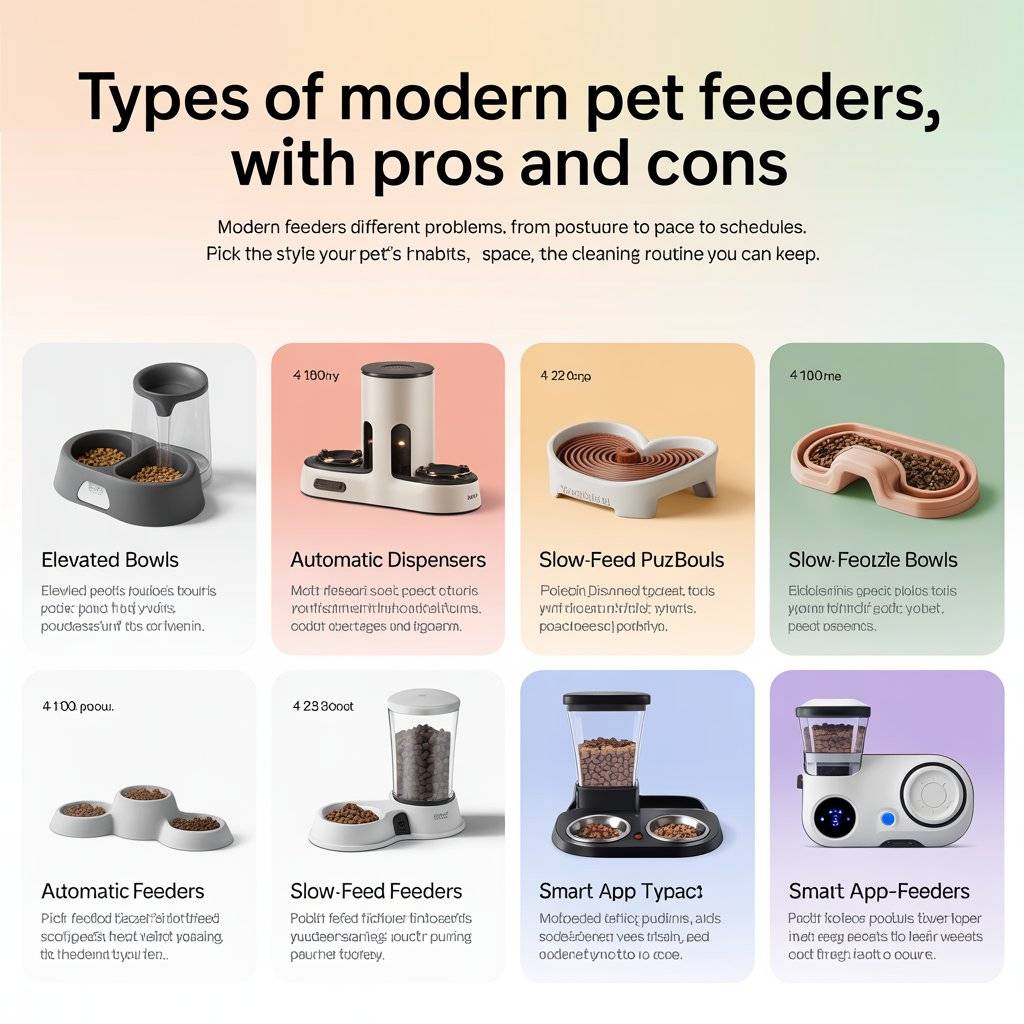
Modern feeders solve different problems, from posture to pace to schedules. Pick the style that fits your pet’s habits, your space, and the cleaning routine you can keep.
Elevated feeders: better posture, cleaner floors
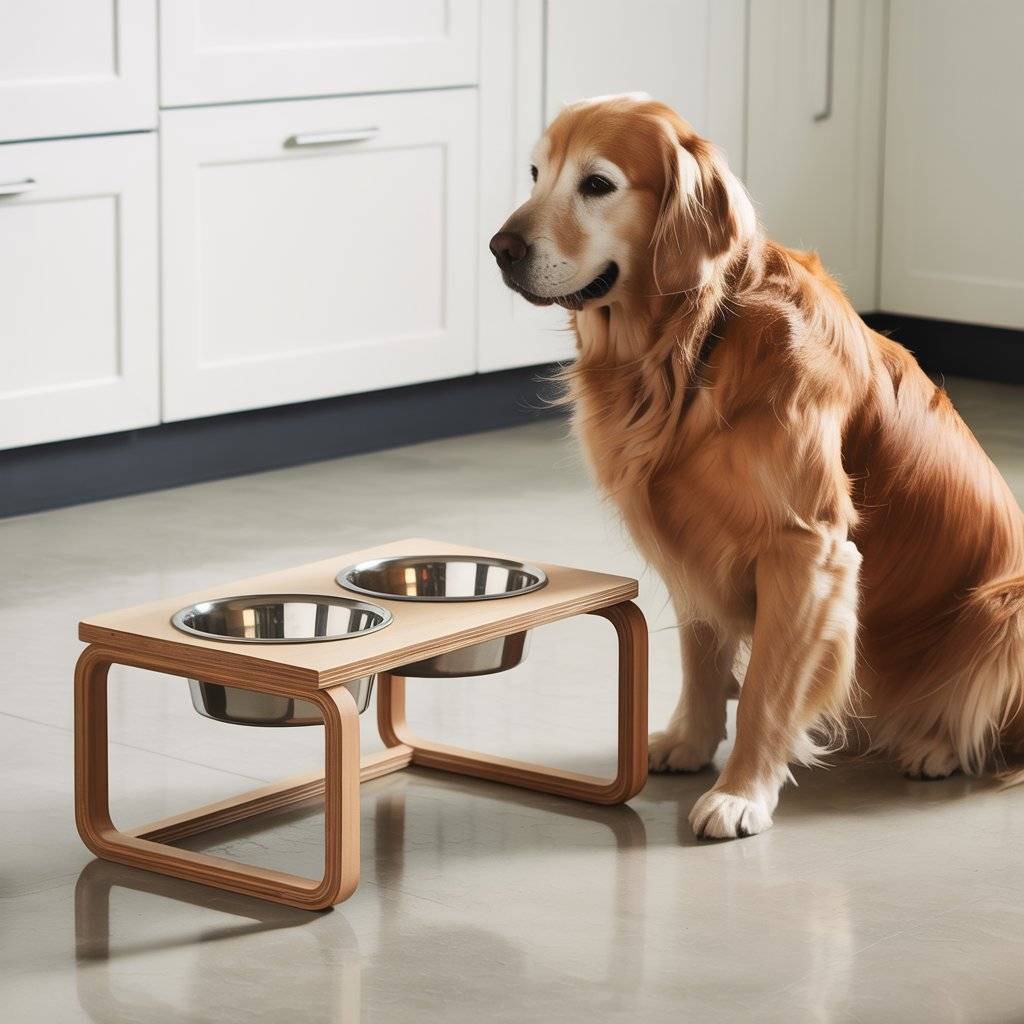
Raised stands help seniors, large breeds, and stiff joints. A slight lift supports a neutral neck and reduces spills.
- Pros: more comfort, less mess, easier to wipe under bowls.
- Cons: does not slow gulping, height must match your pet.
- Best for: tall dogs, arthritic pets, tidy kitchens.
- Look for : adjustable legs, anti-tip bases, silicone feet, stainless or ceramic bowls. In multi-pet homes, set separate heights so each animal eats at the right level.
Slow feeder bowls: curb gulping and bloating
Maze and ridge bowls spread kibble so pets work around grooves. Pace drops, which helps digestion and prevents vomiting.
- Pros: slower eating, light mental workout.
- Cons: harder to scrub, picky cats may balk at tight mazes.
- Best for: fast-eating dogs, young cats that rush meals.
- Look : mild patterns to start, non-slip bases, dishwasher safe. Use a little wet food around the edges to teach the path.
Automatic and smart feeders: timed meals and app control
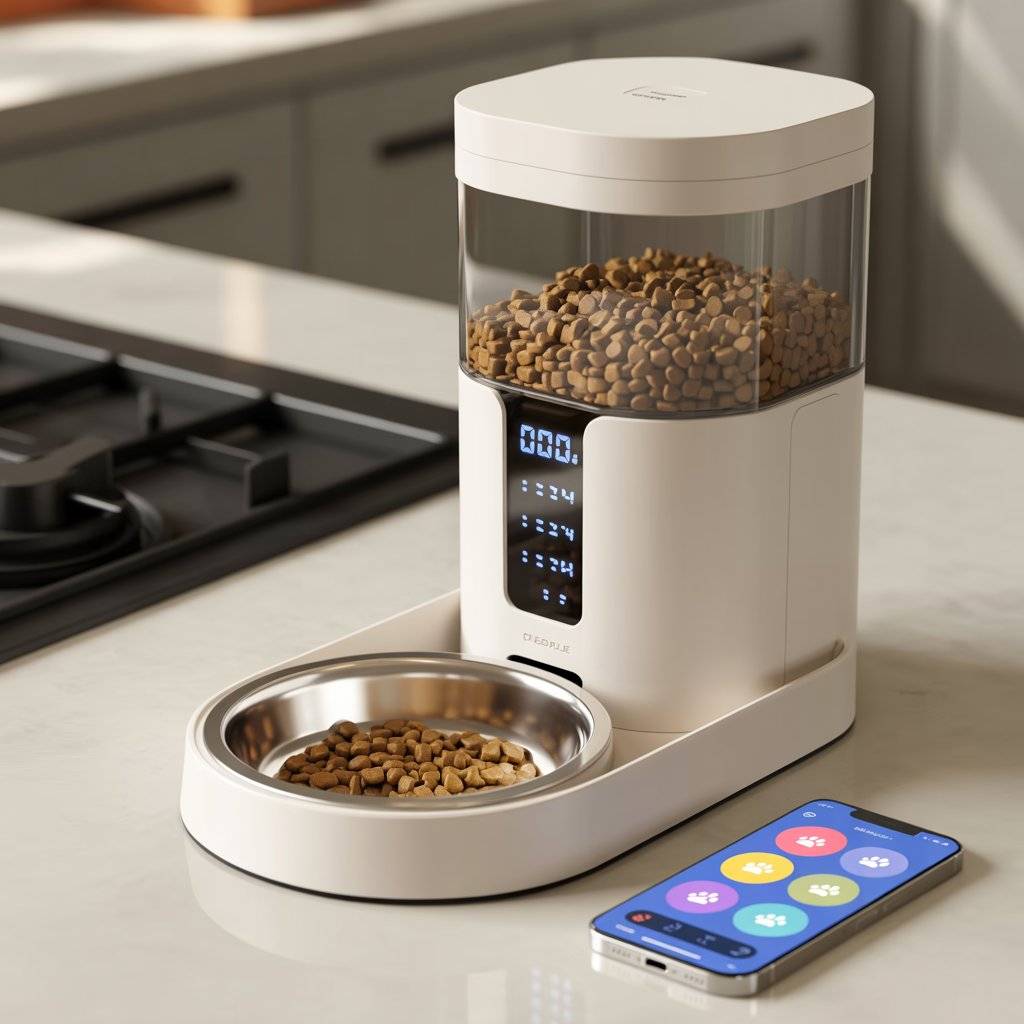
These handle portions and schedules when you are busy. Many offer portioning by weight and multiple meal times.
- Pros: steady routine, portion control, short-trip friendly.
- Cons: needs power, large kibble can jam, clever pets test latches.
- Best for: weight control, cats that graze, busy weekdays.
- Look for in 2026: Wi‑Fi 2.4 GHz app control, battery backup, voice or chime cues, low-food alerts, secure lids for freshness. Check privacy settings, firmware updates, and metal chutes that resist chewing.
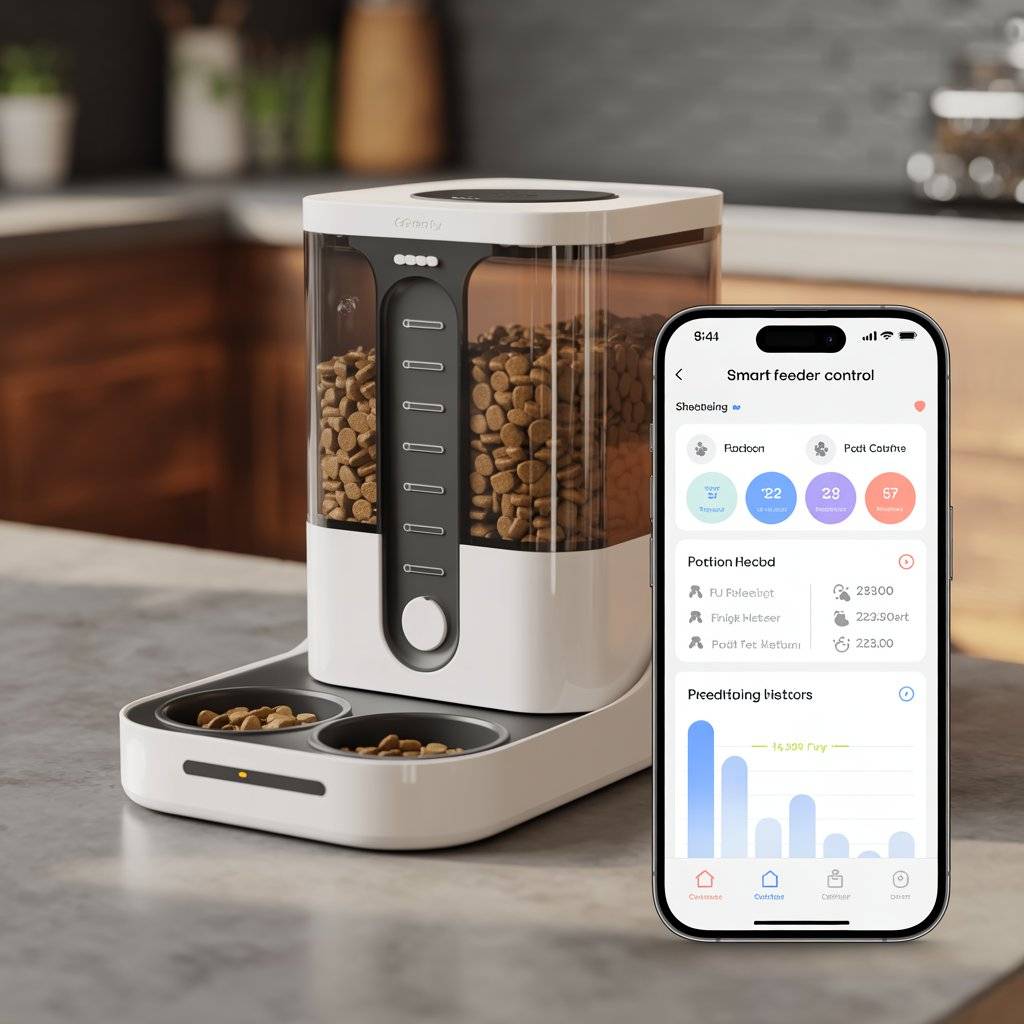
Gravity feeders and simple stations: low cost, low tech
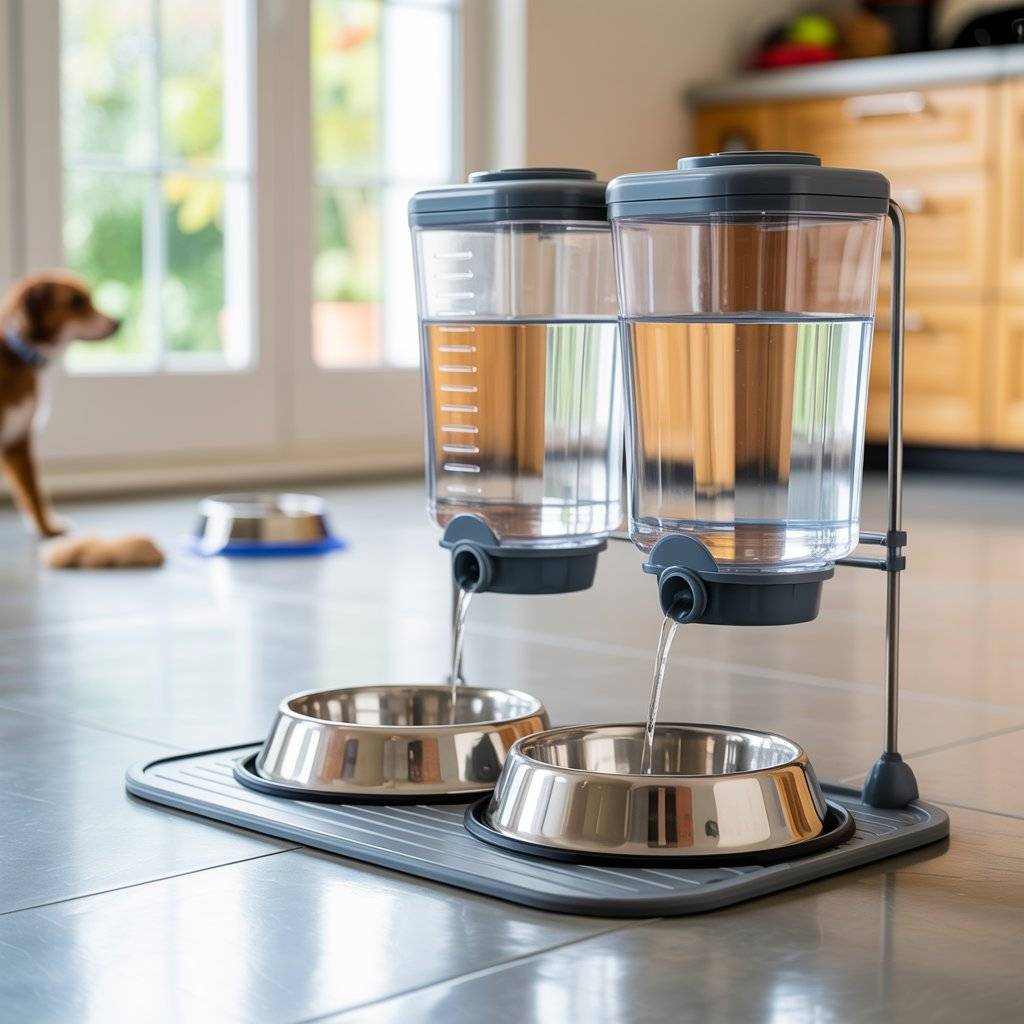
These drop food or water as the bowl empties. They are easy to refill and have no power parts.
- Pros: no cords, quick refills, great for water or grazers.
- Cons: no portion control, not for pets on diets.
- Best for: multi-pet water stations, low-maintenance setups.
- Clear silos to see levels, wide stable bases, removable reservoirs. Add a mat for crumbs, and skip if one pet overeats.
How to Choose the Right Feeder for Your Cat or Dog
Pick a feeder that matches your pet’s body, habits, and your home. Use this quick plan: note age and breed, check health needs, decide on portion tools, then match style and space.
Match feeder to age, breed, and health needs
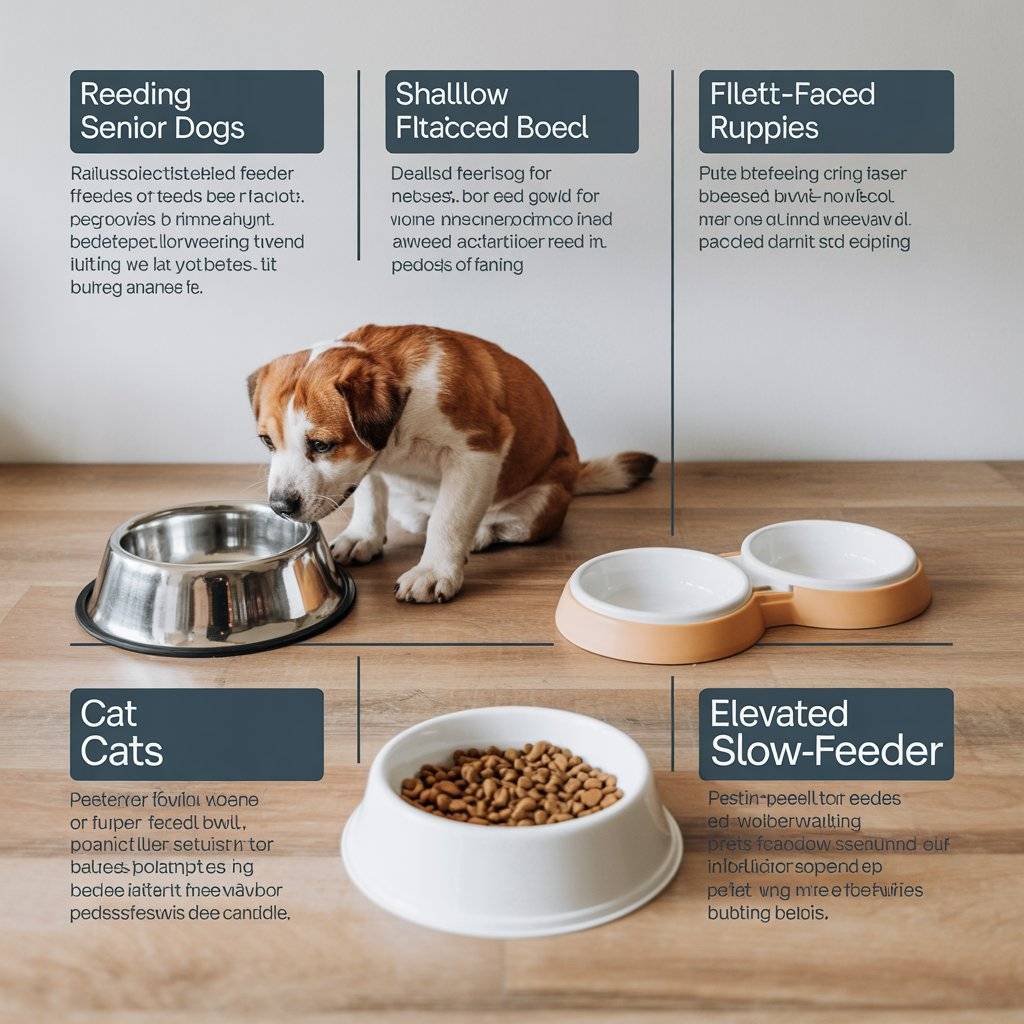
Start with comfort and access. Small changes here make mealtimes calm and pain free.
- Seniors or arthritic pets: choose a raised feeder with a gentle lift. Keep the rim near the lower chest for dogs, 1 to 2 inches for most cats.
- Brachycephalic breeds: use shallow or slightly tilted bowls so short muzzles reach food without strain.
- Anxious eaters: pick quiet, stable sets with rubber feet or weighted bases to reduce clatter.
- Cats with whisker fatigue: use wide, shallow bowls with smooth rims.
- Puppies and large breed pups: aim for modest elevation and add a slow feeder to curb gulping and support steady growth.
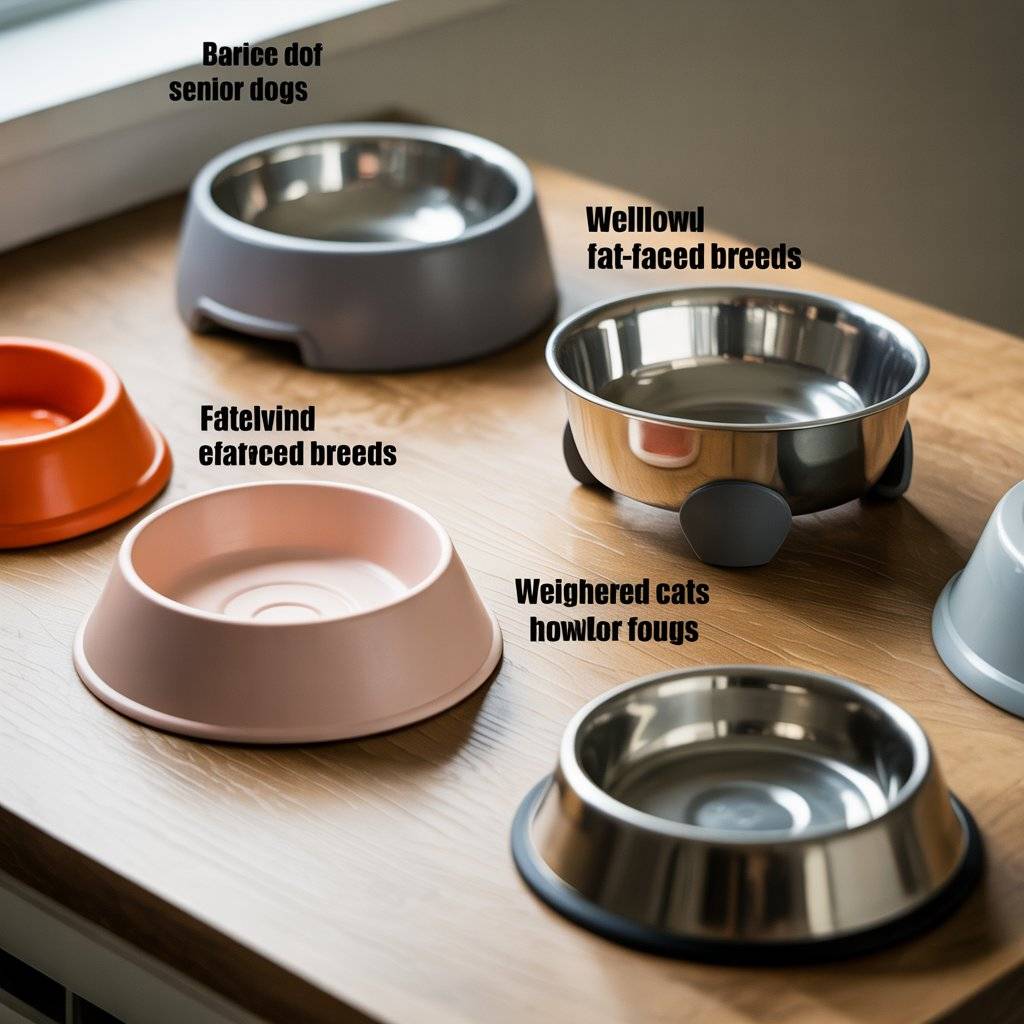
Portion control and weight management made simple
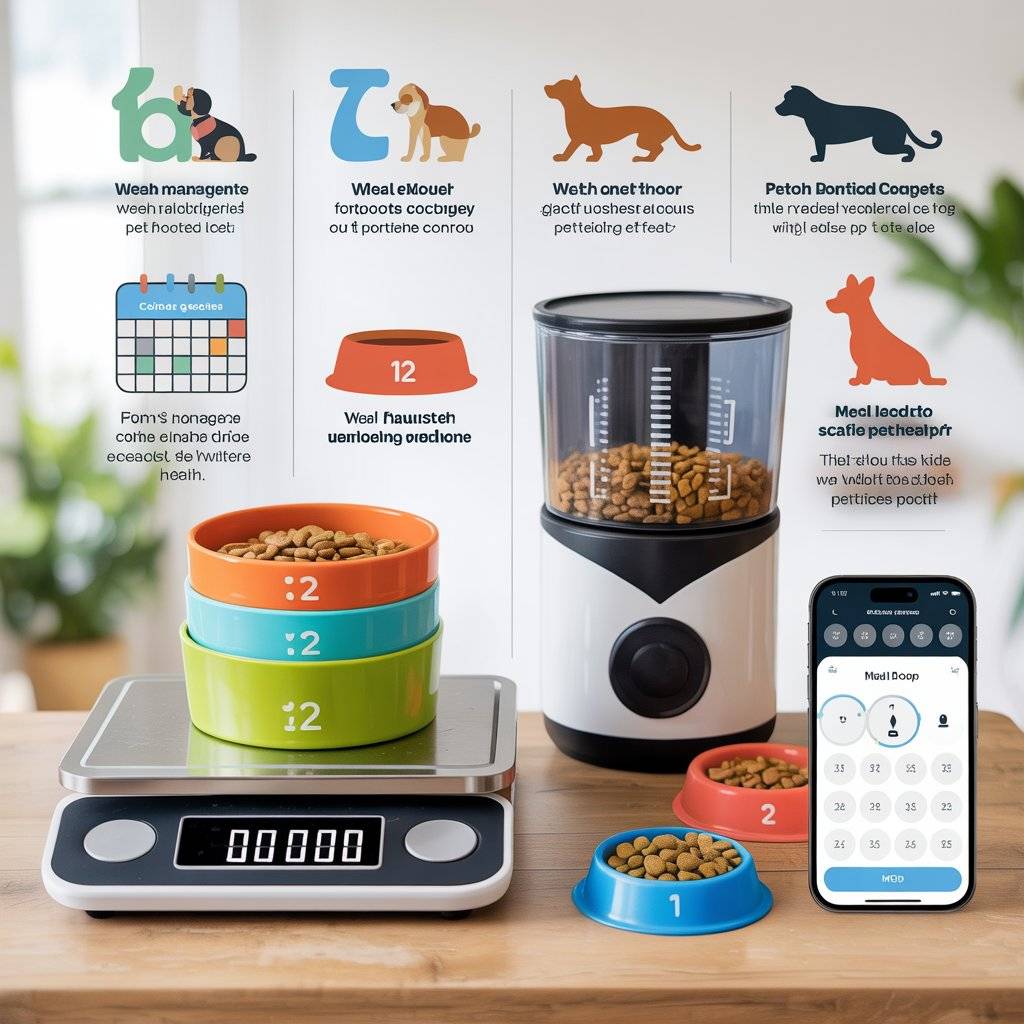
Portion tools keep calories honest and help you hit goals without guesswork.
- Measured bowls and slow feeders reduce speed and volume per bite.
- Automatic feeders with gram-based portions deliver exact meals, even when you are out.
- Ask your vet for daily calories, then split into 2 to 4 meals. Use a kitchen scale for accuracy.
- Choose models that log meals in an app, which makes trend tracking and vet check-ins easier.
Tip: Start with slightly smaller portions, then adjust weekly based on body condition and energy.
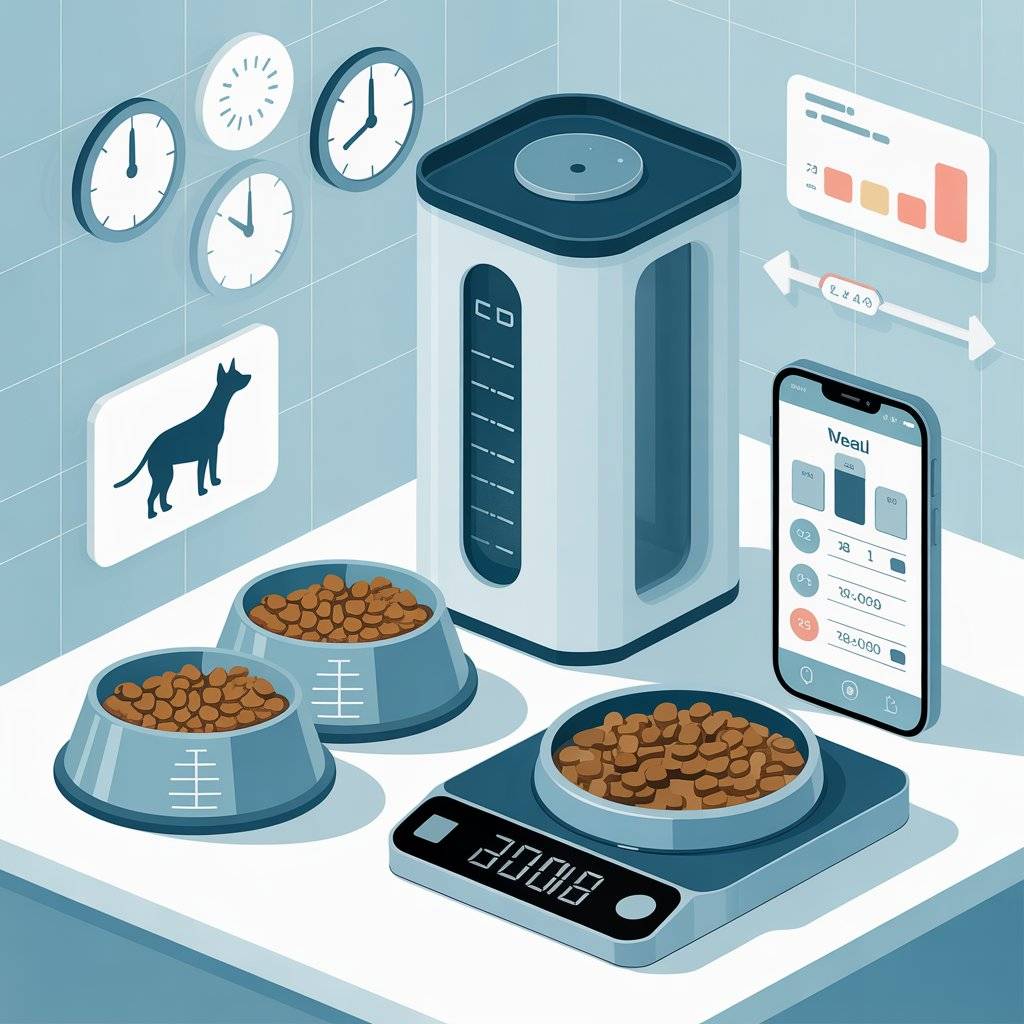
Multi-pet homes: reduce food stealing and stress
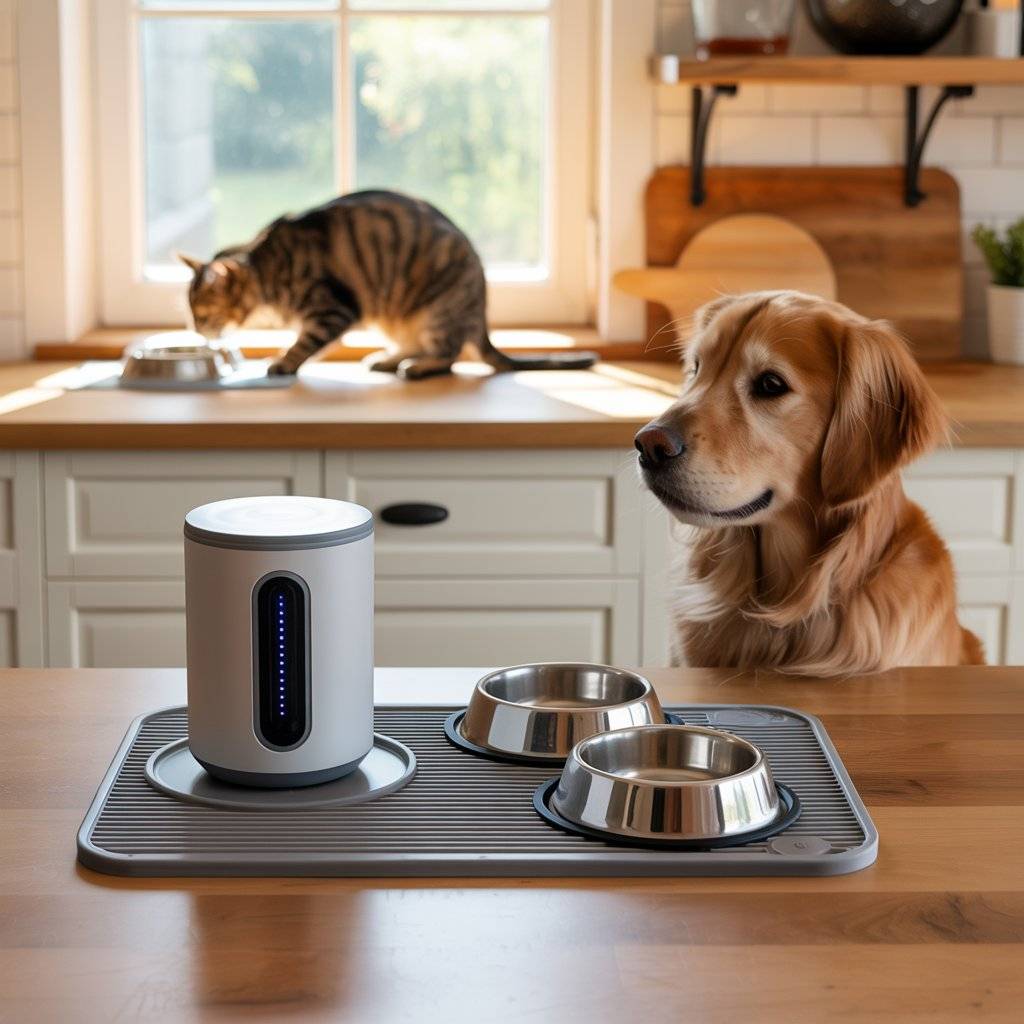
Give each pet a clear eating plan so everyone relaxes.
- Microchip or RFID feeders only open for the assigned pet, great for prescription diets.
- Set raised cat stations that dogs cannot reach, like a counter-height shelf or wall perch.
- Create separate feeding zones. Quiet rooms suit cats, easy-clean areas suit dogs.
- Add silicone mats for grip and drips, and pick anti-tip bowls for pushy eaters.
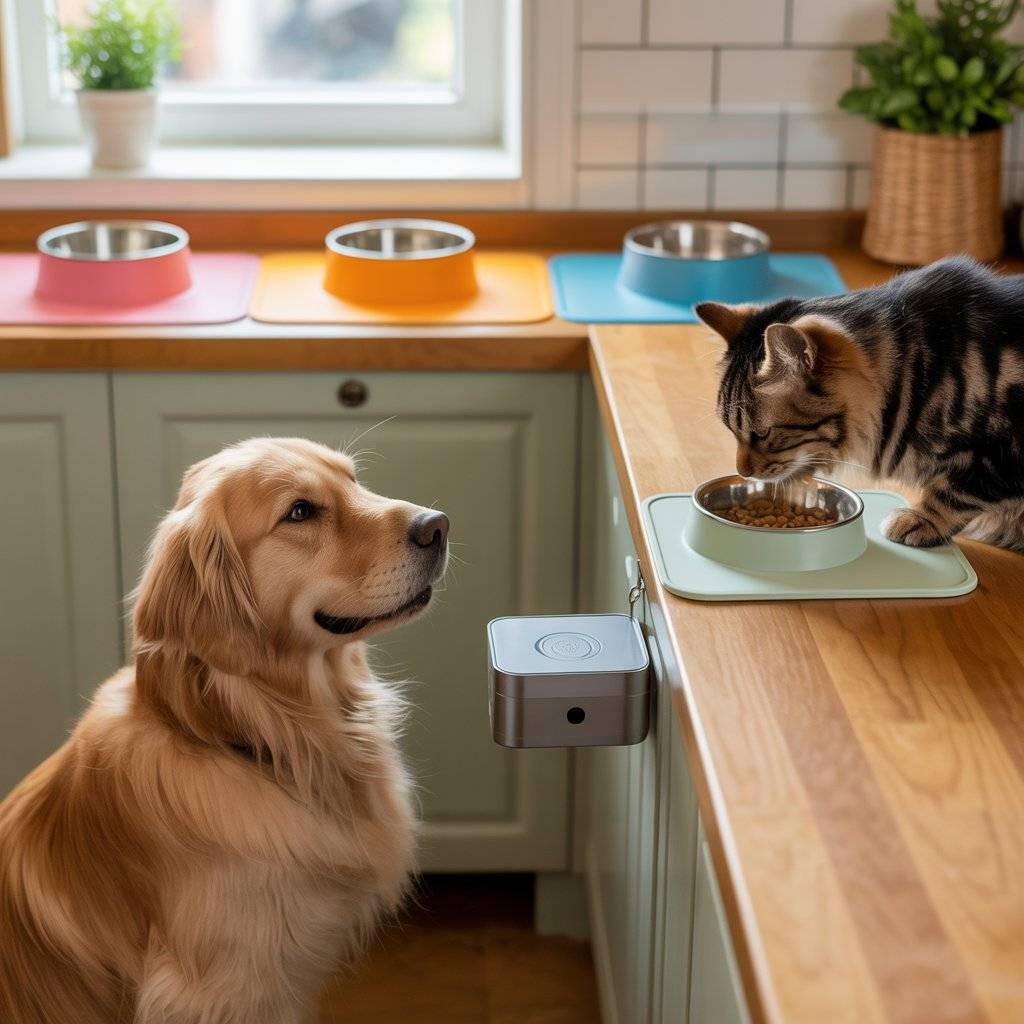
Style, space, and budget: pick what fits your home
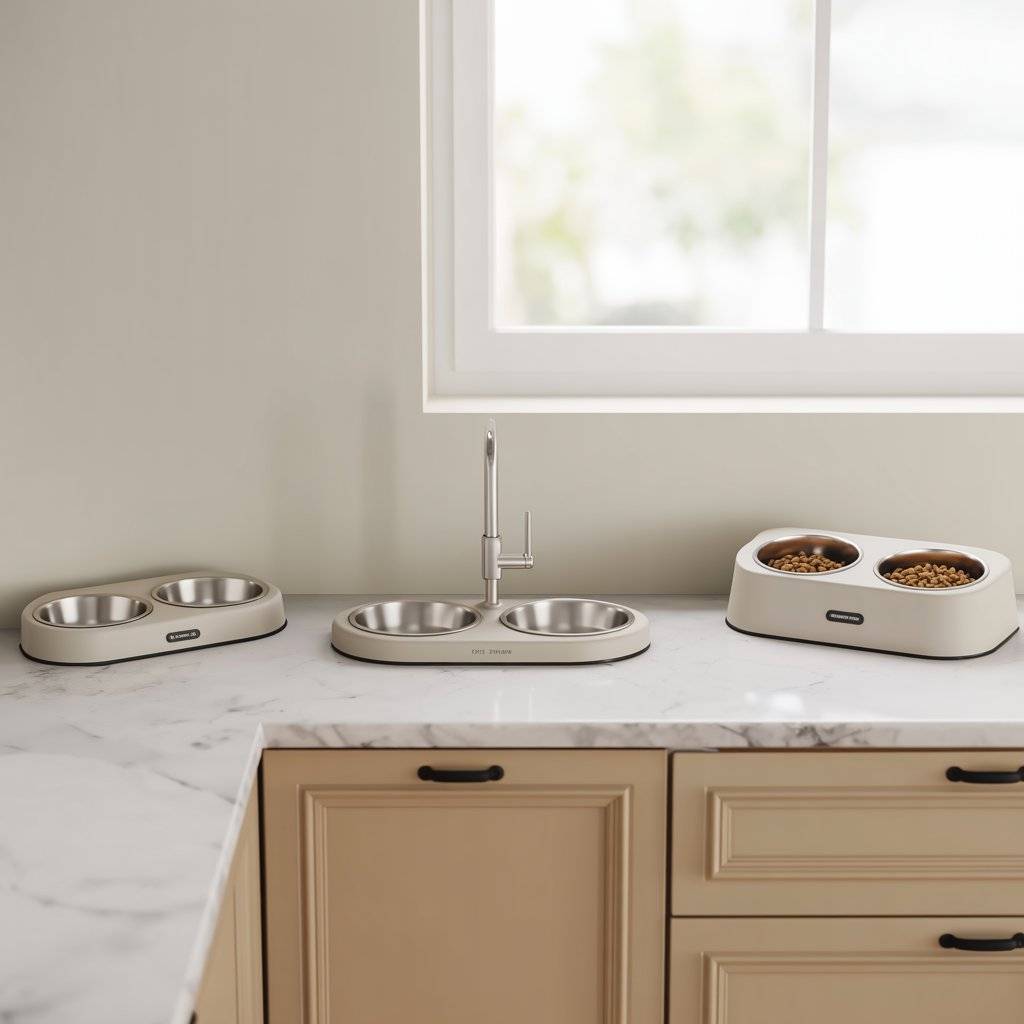
Match design to your room and wallet, without losing durability.
- Small spaces: compact corner stands or nesting bowls.
- Modern rooms: minimalist metal stands with stainless or ceramic bowls.
- Storage help: hidden-bin stands that hold kibble and keep counters clear.
Price guide: basic stainless sets are low cost, ceramic mid range, smart feeders higher. If budget is tight, choose durable, easy-to-clean materials over trendy looks. You will save time and replacement costs.
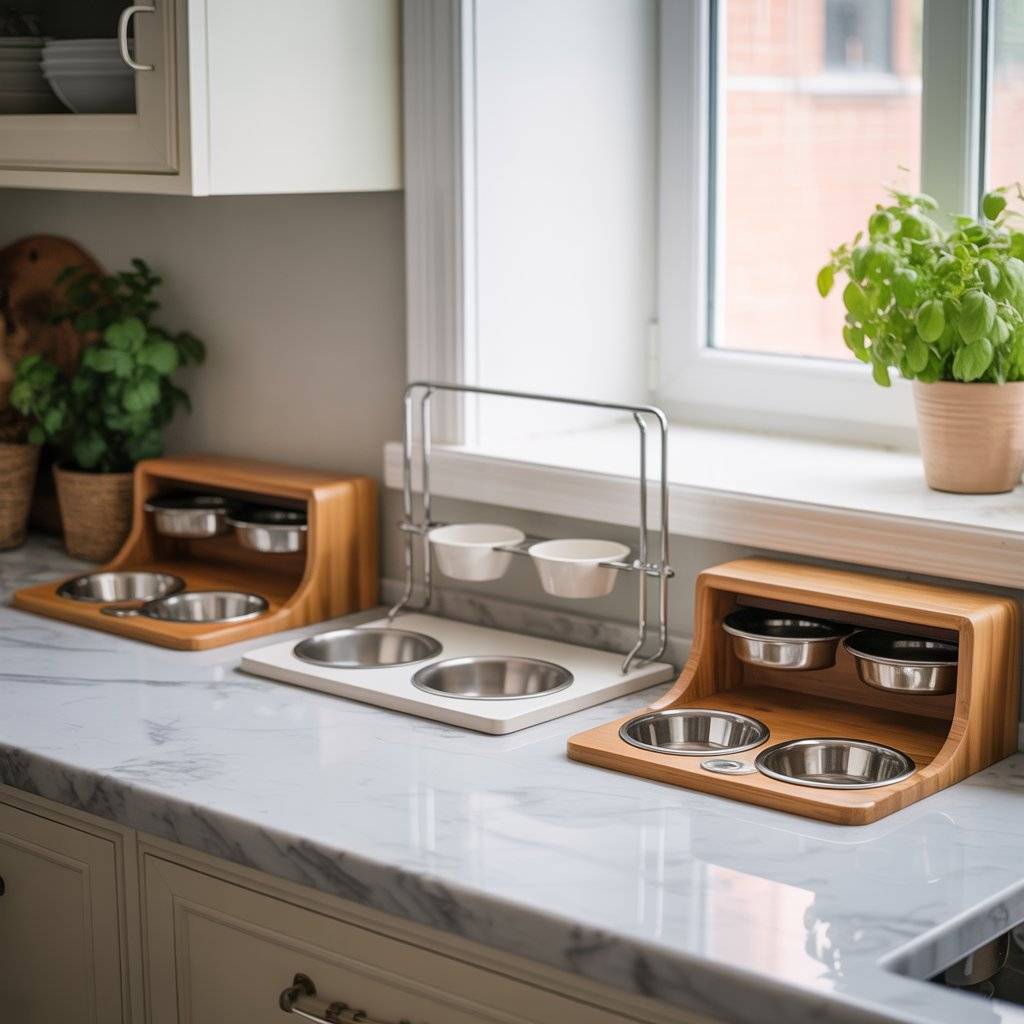
Setup, Training, and Care: Make Comfort Last
Good gear only helps if you set it up well, teach your pet to use it, and keep it clean. A few small habits keep meals calm, safe, and comfy every day.
Measure, place, and test the feeder height
Pick a height that lets your pet eat with a neutral neck and steady stance.
| Pet | Quick measure | Rim height target |
| Dog | Measure floor to lower chest | Set the bowl near that level |
| Cat | No tape needed | Lift 1 to 2 inches if desired |
Place bowls on non-slip mats, away from busy walkways, doors, and litter boxes. Keep water stations a few feet from food to encourage more drinking.
Run a simple check:
- Reach looks easy, no stretching or hunching.
- Neck stays level, not craned up or dropped down.
- Chewing is calm, no frantic scooping.
Watch a few meals. If your pet braces, gulps, or drops food, lower the stand a bit. For speed eaters, pair a modest lift with a slow feeder insert.
Ease into change with calm training
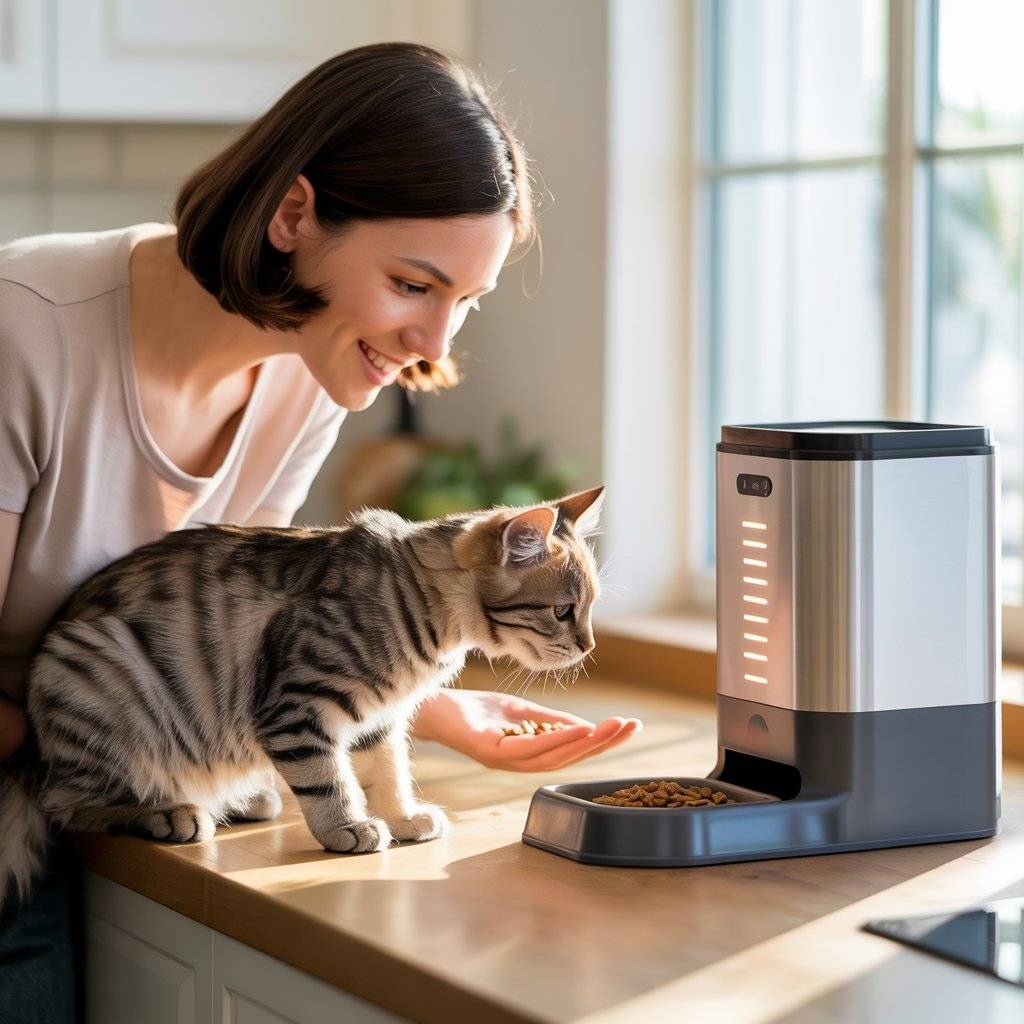
Smart feeders work best with a short warmup. Start with manual drops, then add small timed feeds. Keep the same food, pair with praise, and stand by during the first sessions.
Slow feeders need a gentle start:
- Pick an easy pattern with wide grooves.
- Mix short sessions with a regular bowl to keep confidence up.
- Add a few hand-placed bites at the edges so the path is obvious.
For shy cats, keep motors off at first if your model allows it. Place a few meals in the tray, then introduce the sound at a low volume and short run time.
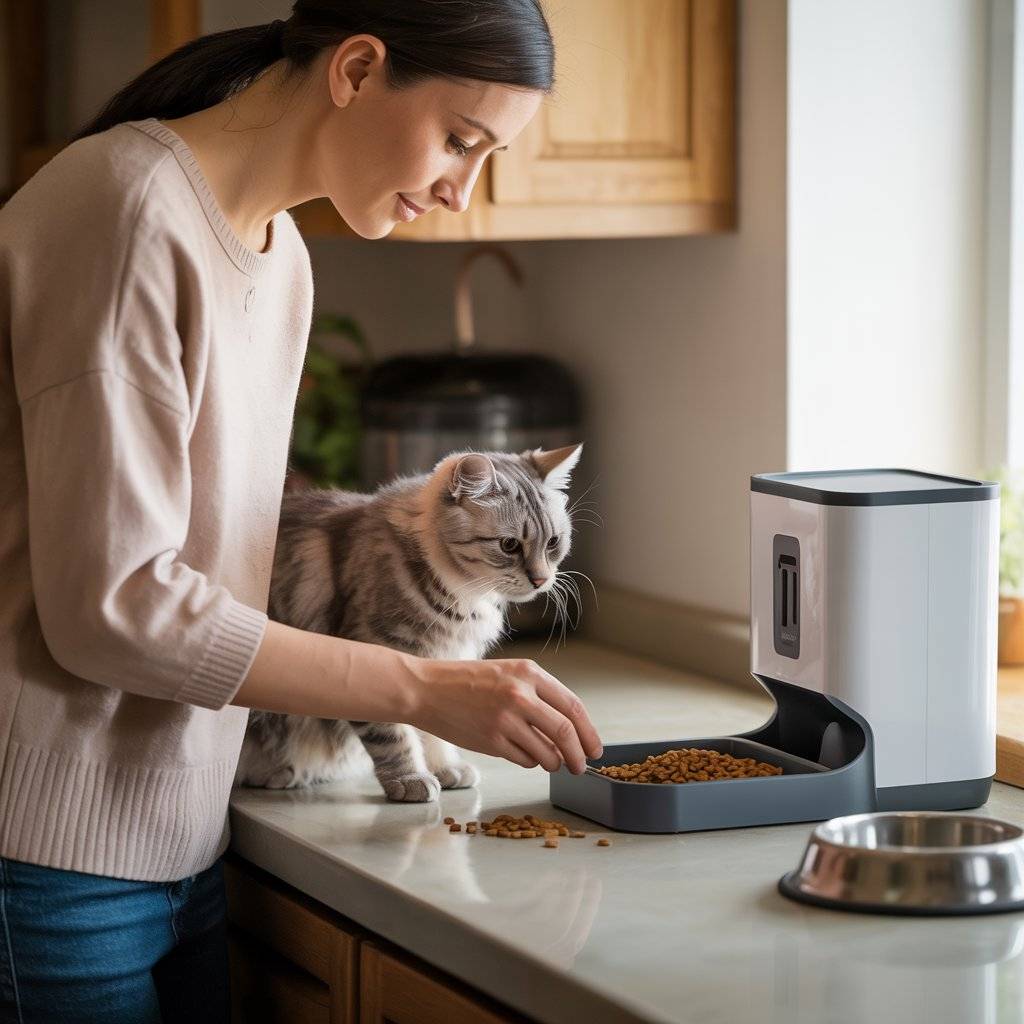
Cleaning routine and safe materials
Stay ahead of germs with a simple schedule:
- Wet food: rinse after every meal.
- Dry food: rinse daily.
- Deep clean: once a week.
Top-rack the bowls if they are dishwasher safe. Use fragrance-free dish soap, skip harsh cleaners on plastic, and dry parts fully to stop mildew. Replace fountain filters on the maker’s schedule, and scrub pump parts during the weekly clean.
Troubleshooting jams, power cuts, and picky eaters
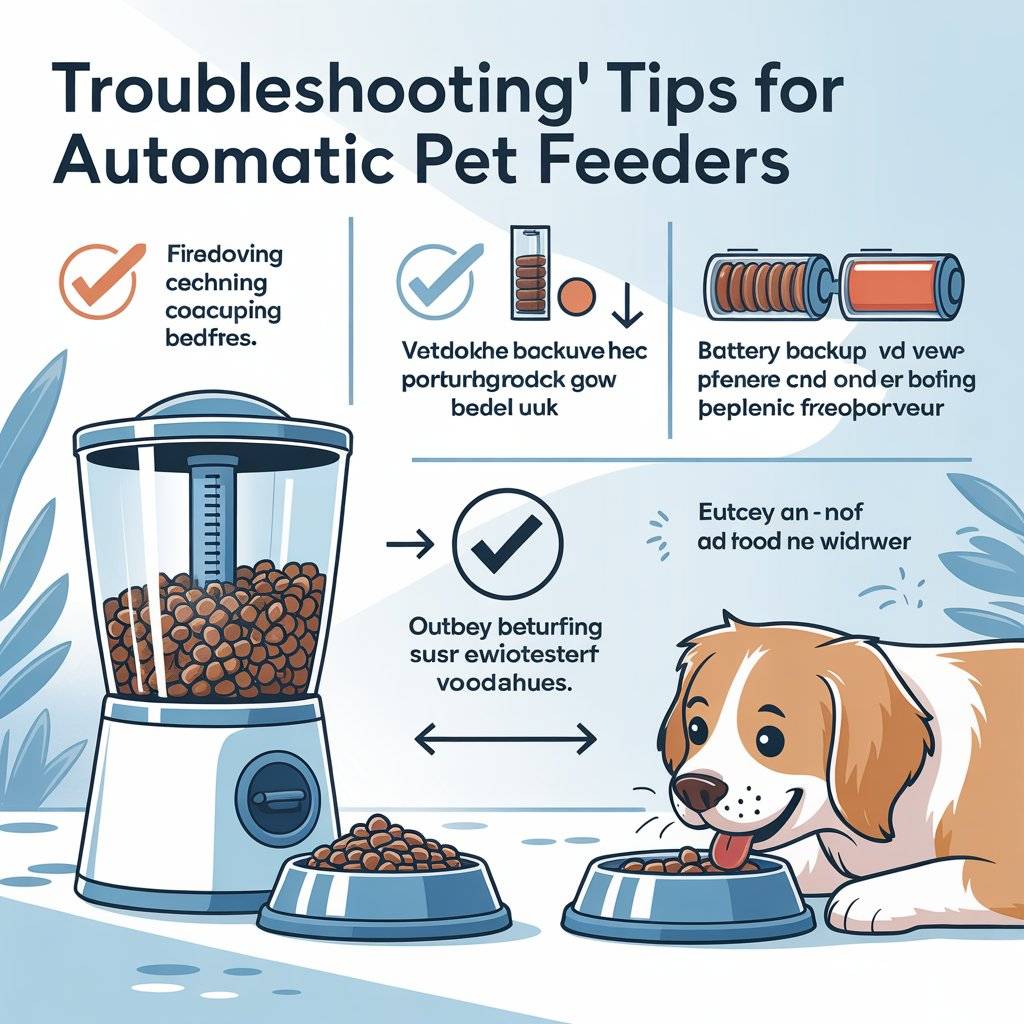
Pick kibble that suits the feeder. Small to mid-size, round pieces move through chutes more reliably than oversized or oily bits. Check the chute and wheel for crumbs and dust, then wipe and fully dry before refilling.
Keep a fresh battery backup in smart feeders, and store dry food in airtight bins to protect texture. If your pet resists a new setup, run short, calm sessions. Place the old bowl nearby, add a few treats to the new dish, and gradually shift more of the meal over. Keep wins small and end on success.
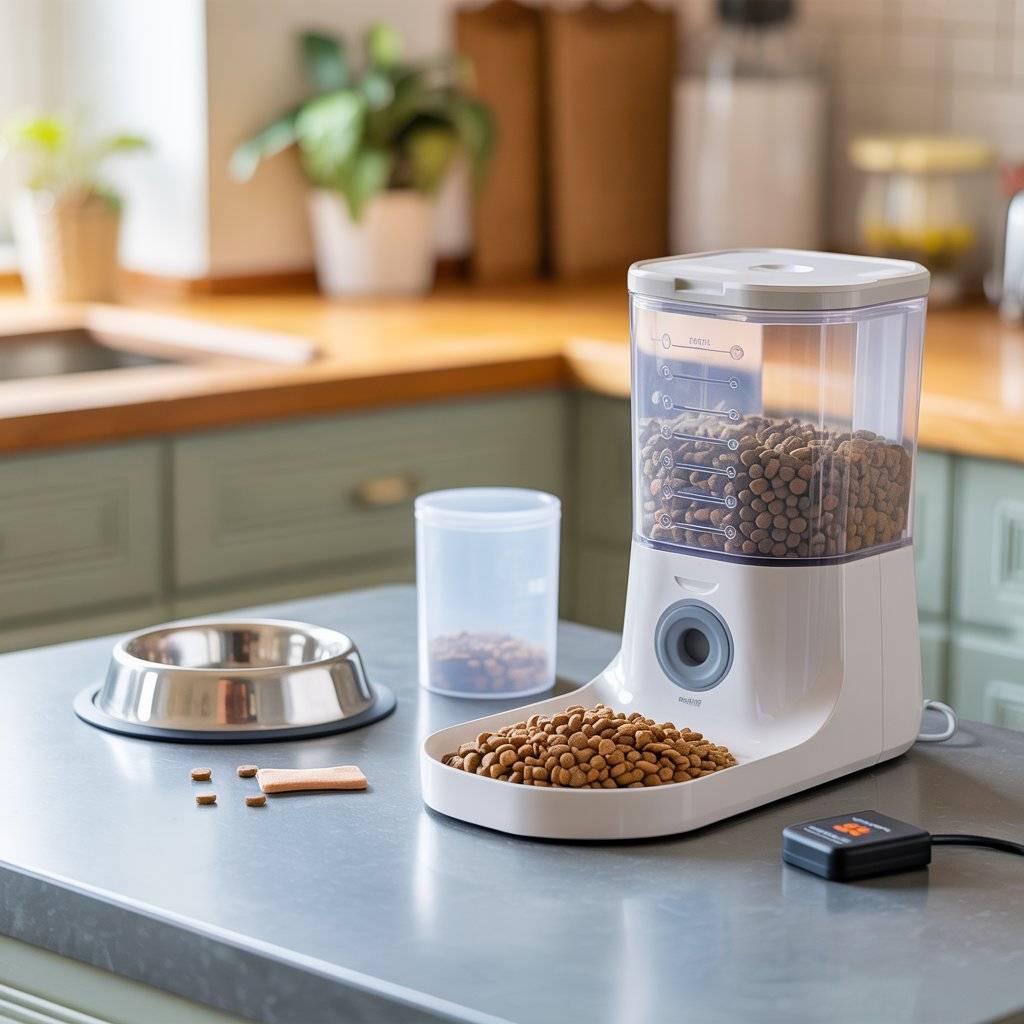
Conclusion
Modern feeders bring real wins, fast. Better posture, calmer eating, cleaner floors, and easier schedules add up to daily comfort for you and your pet. Start small and smart. Swap to a whisker-friendly bowl for your cat, or try a slow feeder for a fast-eating dog. Small changes compound.
Next steps:
- Measure your pet, set the bowl at a natural, relaxed height.
- Choose safe materials, like stainless steel or lead-free ceramic.
- Set a simple cleaning plan, daily rinse and weekly deep clean.
- Add a timed feeder if you need steady portions or routine.
If your pet has health needs, talk with your vet before you switch. Then grab the checklist or product comparison chart in this guide, and pick the setup that fits your space and habits. Calm, clean, and consistent meals start today.
Related Post:
- Natural Wood Tables: Rustic & Eco-Friendly Furniture - December 8, 2025
- Enchanting Christmas Garden Designs for a Cozy, Festive Backyard - November 29, 2025
- 35 Best Open Layout Living Room Dining Room Designs - November 29, 2025

